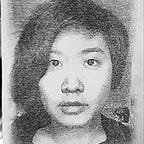Doing Nothing: A Love Letter
April was the first month in which I embraced doing nothing.
I had just passed the one year mark since quitting my full-time job to explore “the next step” — a natural occasion to look back on what I’d accomplished and learned over the last year, and what the next year would bring. During my first year of independence, I traveled (to Iceland for a week, to China twice), worked as a freelancer for two different companies, and started teaching. I was even lucky enough to be able to keep myself busy and financially afloat for the year. I was learning and doing a lot, but it never felt like enough.
More frustratingly, I was no closer to a clear answer about what I wanted to do next.
In such moments of confusion, I have a tendency to leap into as many projects as I can find to distract myself. This time, I decided to do something far more uncomfortable: give myself a month off from hustling to see what, if anything, would emerge.
To celebrate my newfound free time, I decided to start taking weekly Alexander Technique classes.
A friend had suggested the Alexander Technique after I’d complained about starting to develop old man problems like back pain and carpal tunnel syndrome. I’d tried massage and yoga, but somehow I knew that the problem was more fundamental. I felt like an awkward bag of meat; I didn’t know how to stand, or sit, or walk properly. I didn’t know — and therefore, didn’t trust — my own body.
The Alexander Technique is an educational process that teaches bodily awareness, good alignment, and unlearning bad physical habits. It seemed like exactly the right solution.
Unexpectedly, it helped me understand why I needed to take a break, too.
My Alexander Technique classes are split into two parts. During the first part, my instructor observes as I sit down and stand up, then guides me through how to do these motions correctly. As we work on these basic movements, she dispels fundamental misconceptions I have about my body and introduces more useful mental models. “You’re bending from up here, but your hips are actually all the way down here,” she’ll tell me, tapping a spot several inches below my previous guess. I bend again, hinging at the right spot, and the tension in my lower back vanishes. This is the slow, funny process by which my body and I learn to trust each other.
It’s kind of bizarre to pay someone else to tell you where your own bones are, but this is the Alexander Technique’s first lesson: when it comes to identifying problems in entrenched systems, external perspective is absolutely necessary.
During the second part of the class, I lie on my back on a raised table while the instructor moves around me, verbally and physically coaxing each of my muscles to unflex and give in to gravity. She’s providing the guidance, but I have to do the relaxing myself. This practice is known as “constructive rest,” and it’s surprisingly difficult.
Until recently, “resting” meant slumping my entire body into the couch to watch four hours of Netflix until passing out. Constructive rest, on the other hand, requires actively identifying, acknowledging, and releasing each muscle. I slowly convince each muscle in my body to relax and stop bracing against imaginary stress. Sometimes, this involves finding where the muscle is wired up to my brain in the first place, or learning what a state of relaxation even feels like for a permanently tense joint. It feels deeply, unsettlingly uncomfortable and challenging. From the outside, though, it just looks like I’m wriggling on a table.
Constructive rest, I realized, is exactly what I had elected to do with my month off. Though it wasn’t visible on the outside, I was doing some mental spring cleaning: recalibrating my interests and skills, letting go of tendencies I no longer needed as defenses or lifelines, and just generally restoring myself to a new state of balance. Of readiness.
Since embracing the value of doing nothing, I’ve been more productive than ever. The release of old habits has freed me up to try new things, like writing every week. Through the painfully honest evaluation of what I’ve done and what I’d like to do, I’ve found surprising new patterns and directions. By giving myself space, I’ve even found my next step.
Christina Xu is an organizational designer, ethnographer, and enabler based in New York. You’ll hear about her next step very soon!
